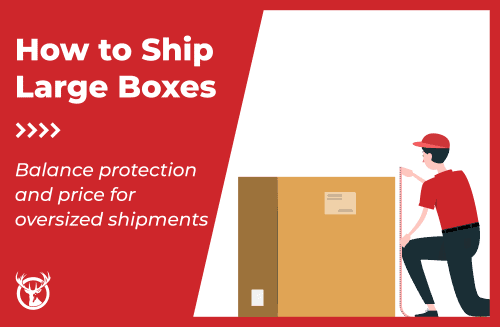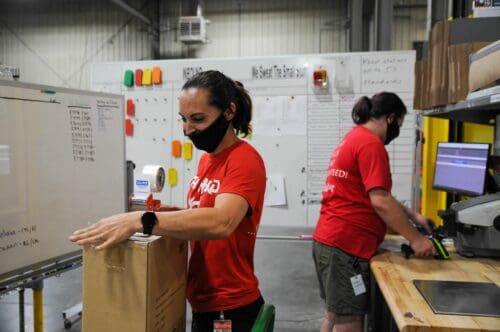Running an eCommerce business is complicated, especially when you’ve got to manage the logistics for a growing number of orders and staff. Shipping prices change, new software arrives, and customers start demanding two-day delivery on everything. At the same time, you’ve got to know your logistics costs so you can charge the right amount to keep the lights on and packages flowing.
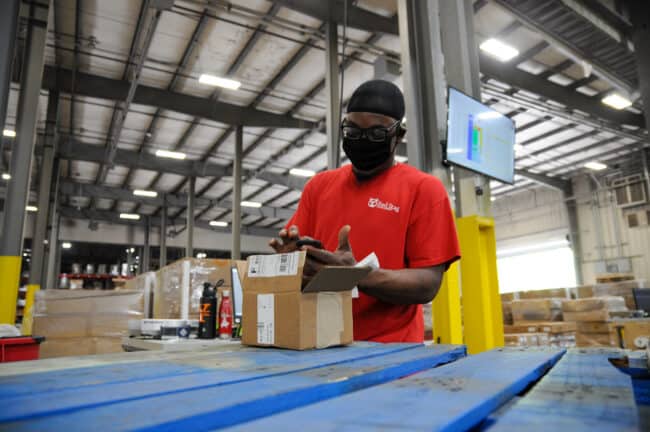
We’re going to look at some of the most common logistics costs and a few things you’re paying for but might not think to include. It should give you a better understanding of expenses and revenue opportunities and help determine if you’re outgrowing your space or could benefit from a fulfillment partner.
There are seven core categories to cover for most eCommerce businesses. They’ll help you get started in creating your complete list.
7 Common Cost Categories
We’ll walk through the logistics costs your business faces in the normal lifecycle of your inventory. That means starting with the inventory you receive from manufacturers or wholesalers and moving through delivery to customers and final support.
1. Inbound Goods and Receiving
First on our list are the costs you face when receiving inventory from your supplier. You might buy directly from a manufacturer or get goods from a wholesaler and have them fill up your inventory. Or, if you make products yourselves, you likely have the raw materials shipped to you regularly. These inbound shipments make up your inbound goods logistics costs.
There are fees associated with each step of the inbound process and are generally relatively easy to calculate:
- Shipping: The cost you pay to have someone send you the items or materials. This should be at freight volumes when possible to reduce your expenses.
- Inbound labor: The wages you pay your team to be available to receive the goods, check orders for accuracy or damage, and put products on the proper shelves.
- Outsourcing extras: If you’re outsourcing these activities, you might face some additional costs such as a standard fee based on the number of SKUs or the quantity of each product. If you do outsource, verify that you save enough on shipping and labor to account for these fees.
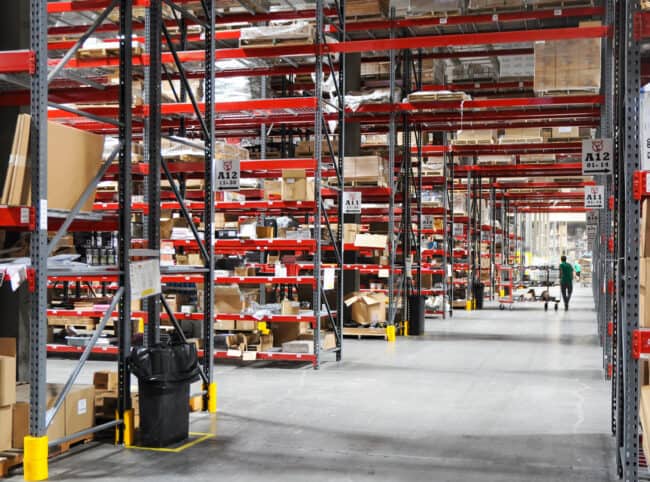
2. Inventory Storage
Once goods arrive at a warehouse, they tend to stay there for a bit. So, you’ll have a few different costs associated with storage. These are common expenses related to any storage, whether you have your own or partner with someone like Red Stag Fulfillment to outsource eCommerce fulfillment. The core difference in outsourcing is that you pay a set fee rate based on products, and it encompasses a part of some larger costs that you would normally bear — such as electricity, security, and building maintenance.
Here are most of the common storage-related logistics costs:
- The building itself. If you own or rent a warehouse, you’ll have a lease or commercial mortgage.
- Utilities: Warehouses need their own systems to keep the building and inventory inside it safe and sound. This means electricity, HVAC, and water/sewer costs. You might also need to pay for heavy-duty systems if you have advanced needs, such as cold storage. In the modern world, utilities also include security systems and monitoring systems to protect people and goods, plus access to the Internet to support your order management software.
- Safety equipment: Depending on your location, your warehouse will have specific requirements for fire and other safety. Not only do these systems have costs for installation and maintenance, but many municipalities will require you to test systems regularly. Count all of those costs.
- Backups: A reliable warehouse has multiple backup systems that will run additional costs each month. You might need on-site generators, local storage for data, or even a small storage location for emergency order management. At Red Stag, we prefer having multiple redundancies and even include multiple independent ways to access the Internet so that our connection to customer systems stays up and running.
- Shelving: Look at the cost it takes to install your shelves and any maintenance you need to do, including cleaning shelves regularly. Capture this and consider spreading out installation and replacement costs over a 12-month period (in terms of calculations) to understand what you might pay each month.
As warehouses get larger, most of these costs scale accordingly. That can sometimes make it difficult for a company to transition to a new location when they’ve outgrown a warehouse. The jump from small to mid-sized needs is one of the most common places for an eCommerce company to consider outsourcing fulfillment.
If you do outsource, ask about storage cost calculations and requirements. You might need to maintain a certain inventory level and pay for that physical space in a warehouse. That should provide you with a baseline for cost estimations. However, some 3PLs will charge additional fees for large or heavy items if that isn’t their standard inventory type.
3. Pick and Pack Actions
Now we’ll jump back to labor-intensive costs covering the most common actions of a warehouse. Unfortunately, these actions also have some of the highest variable-cost items in a warehouse too. We’ll address those elements — like filler materials and tape — in a separate section because it’s always a promising idea to monitor usage across the entire warehouse operation in order to catch spills, spoilage, and waste.
Pick and pack operations are where your teams fill the orders your warehouse receives. Order management or warehouse management tools create lists for orders, and each picker goes and gets the item on their order. After everything is picked from its location, a complete order is taken to a packing station where all of the items are combined and readied for shipping. This covers putting everything in boxes, adding filler and other materials to secure products, taping up the box, and attaching shipping labels.
Depending on the size of your warehouse, you may also need someone to specifically set a pickup request for your carrier(s) of choice or take packages to be shipped to a carrier’s retail location.
You’ll want to track labor across all of these actions, from the moment an order is received to the final steps to get everything out of the door today. Here are some of the most common labor activities you want to ensure that you track:
- Picking goods off of shelves for each order, including a lot of time walking across your warehouse.
- Time spent gathering equipment or other supplies needed to pick an order.
- Time spent verifying that each order is complete and correct — ideally, this happens multiple times during the pick and pack process.
- Labor for bringing materials to a packing station and the actual packing of boxes.
- Time spent organizing finished boxes for pickup or delivery.
- Checking, cleaning, and maintaining shelving, picking lanes, and packing stations.
- All breaks and additional time you give employees during their shifts.
- For COVID procedures, you’re also likely facing increased labor costs for time spent cleaning and disinfecting common surfaces and equipment multiple times every day.
- And finally, don’t forget the time your managers and leaders spend monitoring warehouse activities.
Thankfully, most workforce management tools make this one of the easiest aspects to track in your warehouse. You can look at labor costs for a shift or day and see what your standard day looks like. You can also measure that against how many orders you fill in a typical day, helping you understand average costs per order.
When you outsource order fulfillment, you generally won’t be paying labor costs directly. Companies often charge a fee based on the number of products, product size and weight, units per order, and then any finishing touches unique to your brand. So, if you have special packaging requirements, want your own unique filler, or have other branding elements included, you may face an additional cost.
Note that you’ll face additional labor expenses if you have advanced practices like kitting or offer a subscription service where packaging and contents change regularly.

4. Order Fulfillment and Shipping
We’ll stick with straightforward costs and go with what’s likely the easiest to track and measure if you have a warehouse management system or other order fulfillment software. We’re talking about the cost you pay to ship goods to customers.
To calculate these costs, you’ll need to keep track of your fulfillment based on each order. Determine what carrier, speed, and final price were used for everything that has gone out the door. It’s a clever idea to track the entire cost to help understand your shipping pricing, whether or not you charge customers for shipping. Over time, this will hopefully decline per order as you grow or are better able to match speed and pricing with carrier options.
Fulfillment companies like Red Stag can help you reduce these costs in two chief ways:
- You generally get access to lower rates from carriers because of the 3PL’s higher volume of shipments. This means paying less per order even if everything else stays the same.
- By offering multiple warehouse locations, you can split inventory and stage it at multiple sites. This moves your products closer to many customers, allowing you to ship faster at a lower price.
5. Returns and Replacements
Just because your products are out the door doesn’t mean those logistics costs are gone. You could potentially be facing more and that means you’ll need to pad the margins a little bit just in case people send in returns or ask for a replacement. Returns are just a fact of eCommerce but calculating their costs can be a little tricky. Depending on your products and returns policy, plus how many returns you average, costs can run the gamut.
So, there are a few things to consider when it comes to your returns policy and costs.
The first note is whether or not you offer returns. If you don’t accept the policy and sell everything as-is, then you won’t have costs here. You might face some increases in customer service or have to spend more to manage your reputation when something goes wrong, but logistics costs are done.
Please note that you’ll be required by law to accept returns or at least return most of your customers’ money in many retail situations.
If you do offer returns, it’s time to look at products. Generally speaking, most customers will expect you to cover the cost of return shipping. Your first calculation is how much revenue you generate per order. Does that cover the return shipping costs for you? If not, you might consider sending replacements for damaged products or incorrect orders and simply ask the buyer to keep and throw away the item in question.
You’ll also face a few labor costs for your returns. You need a team to handle these inbound shipments and check products for damage. In many instances, this means having leadership create criteria for when a return is acceptable or what needs to be discarded. From there, you’ll need to train staff on these procedures and how they can ask questions.
Returned products then need to be reviewed and sorted. Viable goods are put back on shelves and your inventory count is updated. Unusable items must be destroyed, and you should keep track of these as well. Customer service teams will need to be updated regularly on the status of these items so they can provide updates.
And finally, sending the customer a replacement product comes with all the same costs as normal order fulfillment. The downside is that you’re not generating any revenue at this point.
Returns can keep customers happy but end up costing your business a lot and harming margins. Work with a company like Red Stag Fulfillment that has multiple checks in place to ensure that every order going out the door is correct and that you’ve got enough insurance coverage on each shipment too. We know these expenses add up fast when there is a mistake, which is why we work to make you whole.
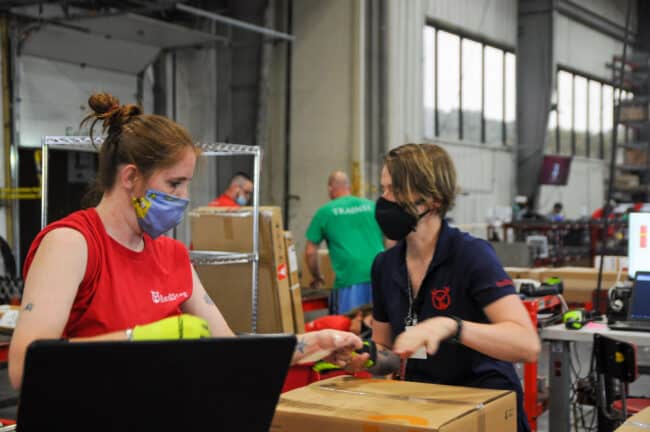
6. Software and Support
Logistics costs will include your monthly subscription pricing for your warehouse, transportation, and order management software. Look for the monthly subscription fees that cover what you use to manage orders and send instructions to pickers and packers. Automated printers and carrier selection tools, and anything else you use will come with regular fees.
While many solutions have some basic support included, warehouses often pay for premium support packages when available. These ensure that you can get someone on the phone right away to address downtime or other errors — or simply get access to a backup so you can keep orders moving.
Track your costs for a quarter or half the year to understand what you’re paying on average each month for the tools you need and the third-party support required to maintain them.
Even creating your entire own warehouse management system will still come with labor costs for development, servers, and equipment to run it, and a team to be on hand to support it.
7. Equipment, Supplies, and Maintenance
Nearly every step discussed above requires some kind of equipment or material. Shelves will need bins to store goods. Crates may require a forklift to move safely. Inbound teams require gloves and box cutters to process freight shipments. Pickers need carts and mobile scanning devices to keep orders accurate and ensure they’re complete.
Then you move over to packers who have a high level of need for materials and supplies. Each needs boxes, tape, and filler material to protect your shipments. In most cases, you’ll need to have multiple options so that you can keep orders in as small of packaging as possible. These stations will have printers for shipping labels and potentially others for the sheets, promo items, and coupons you’re including with your latest marketing campaign.
Everything that has a refill option needs extra so when a station runs low, they can access an immediate replacement. Running out of these items can cause you to have to shut down or reduce capacity, slowing your capabilities and causing delays. Those can easily eat into your margins.
The final unfortunate fact of life is that this equipment can and will break down at some point. A computer will stop turning on or a monitor will go blank. Printers jam and internal mechanisms break. Scanners stop being able to read barcodes. Forklifts require ongoing maintenance. And even that lucky cart is going to lose a wheel one of these days.
Logistics costs encompass all of the tools and materials you need, plus the backups, maintenance, and replacement expenses you’ll face.
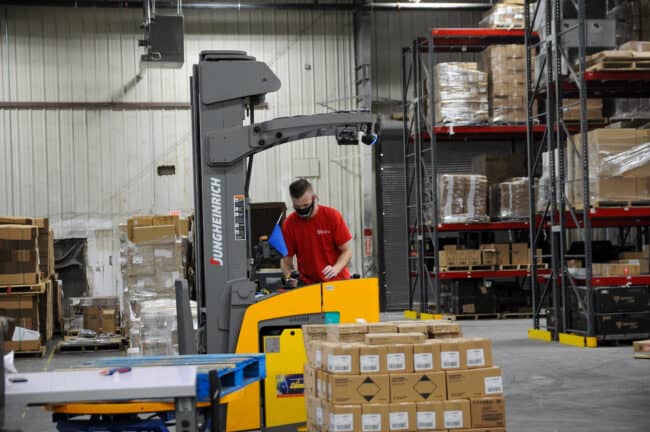
Logistics Service Providers and Cost Savings
Not that we’ve got our ever-increasing list of logistics costs, it might seem a little overwhelming for your growing eCommerce store. Scaling up with demand often means scaling costs in each of these areas. That’s a core reason companies come to us for help avoiding out-of-control spending.
With a third-party logistics provider, you pay for what you use. When a scanner breaks or the tape is no good, you’re not hit with any added costs. If a warehouse needs to run an extra shift to get everything out the door, you pay the standard costs for moving each order instead of shelling out for overtime.
A 3PL isn’t right for every company. You need to have a certain volume for outsourcing to be cost-effective, and some other characteristics will help you save even more. Learning that can be hard, but you don’t have to do it alone.
We’re happy to have a no-obligation discussion to see if a 3PL is right for you and help you determine the best outsourced logistics solution for your business. Click the button below to have a risk-free conversation about taking your fulfillment to the next level while keeping costs low.








